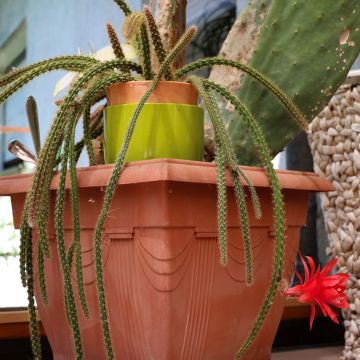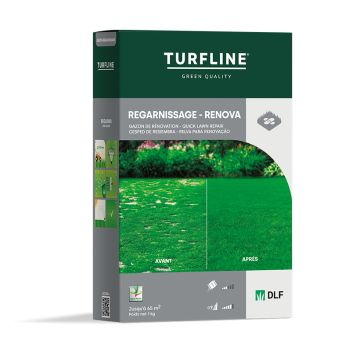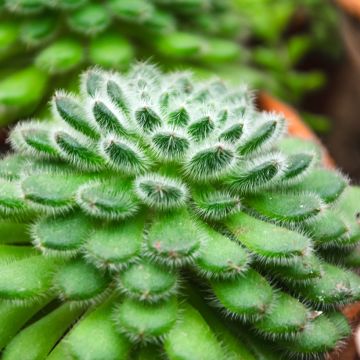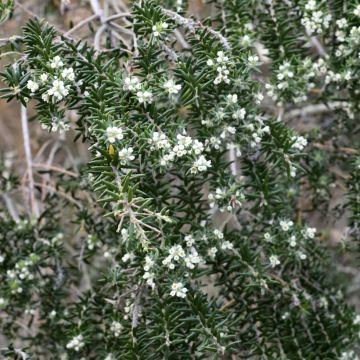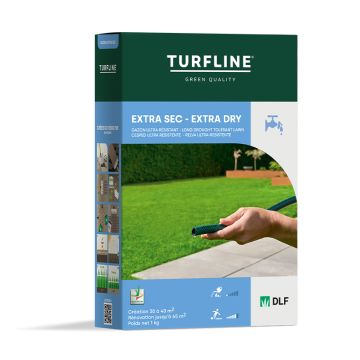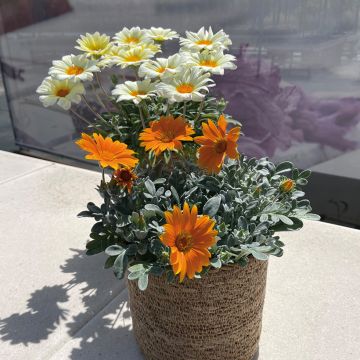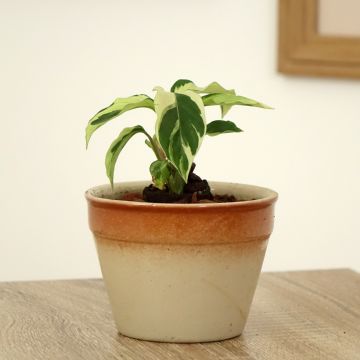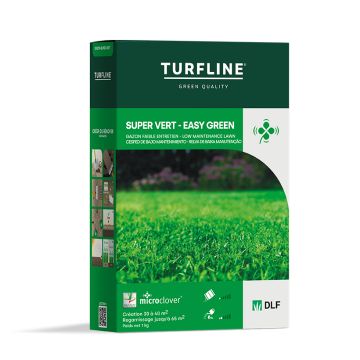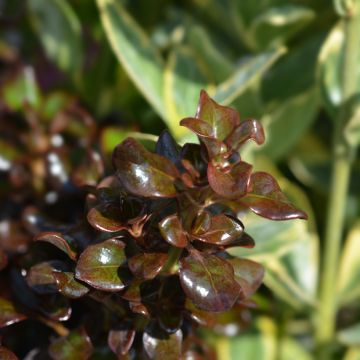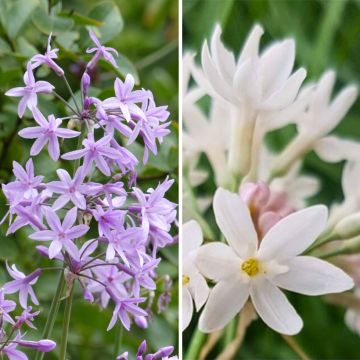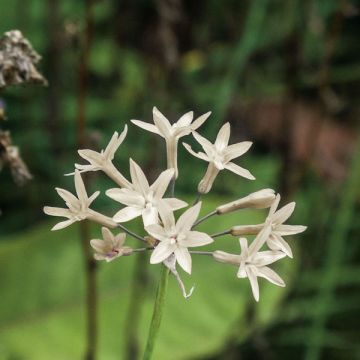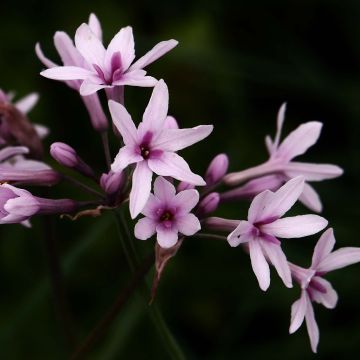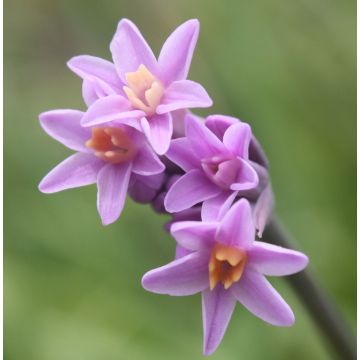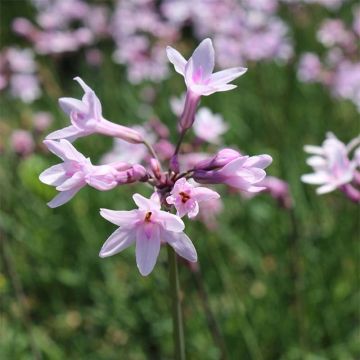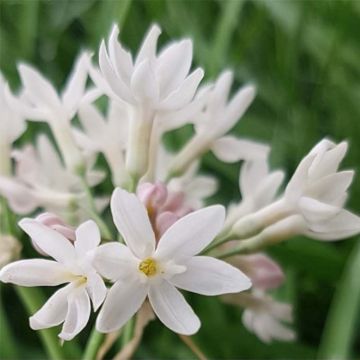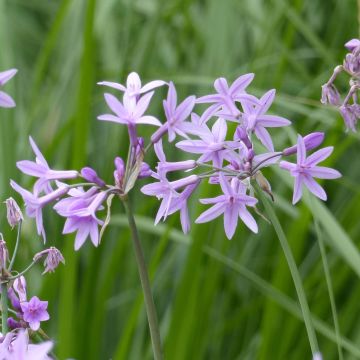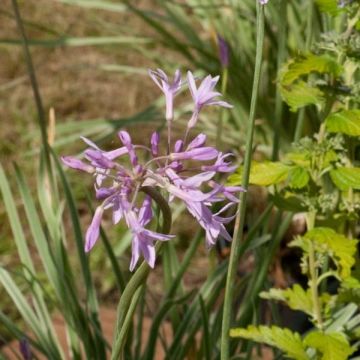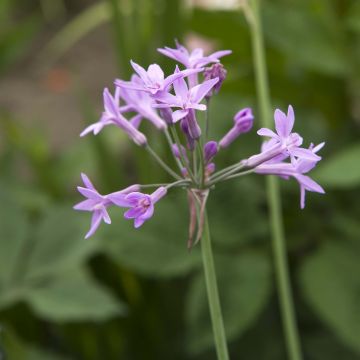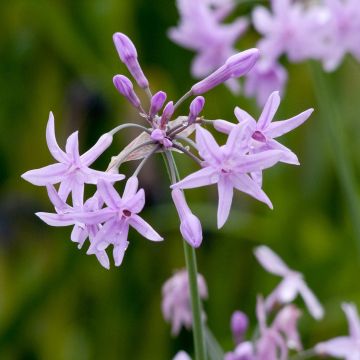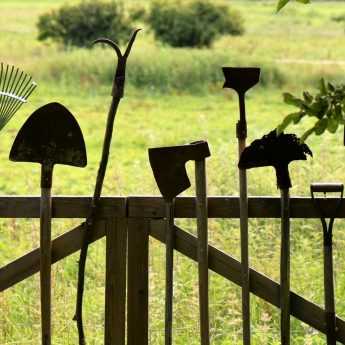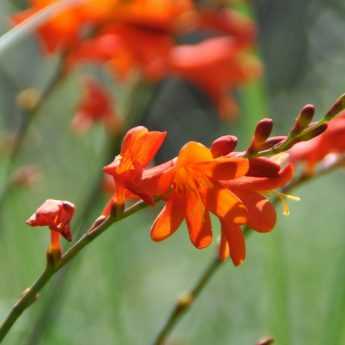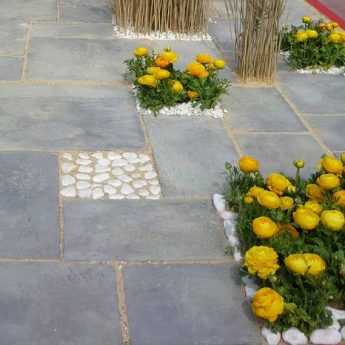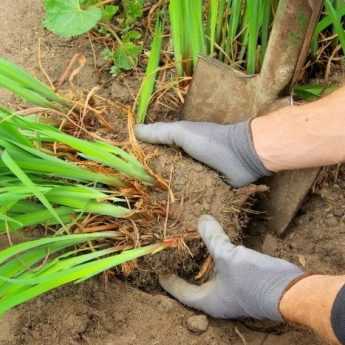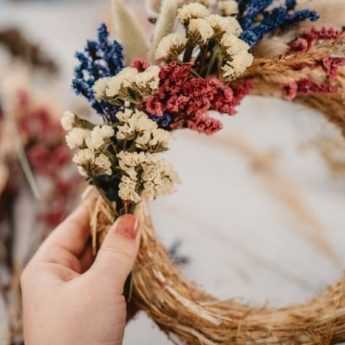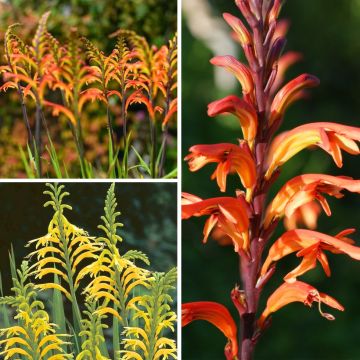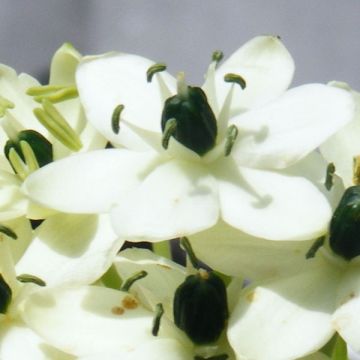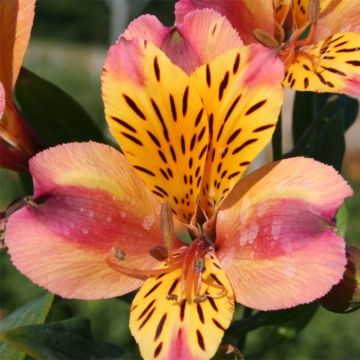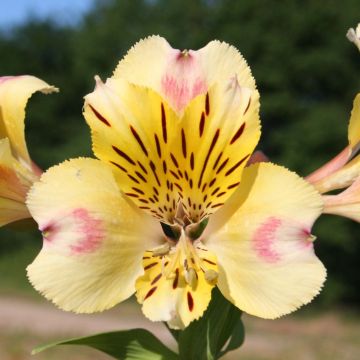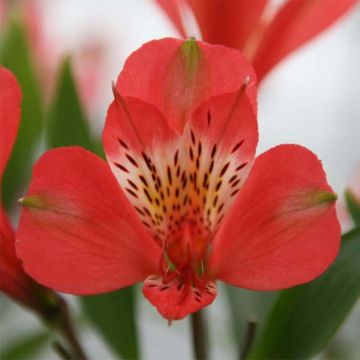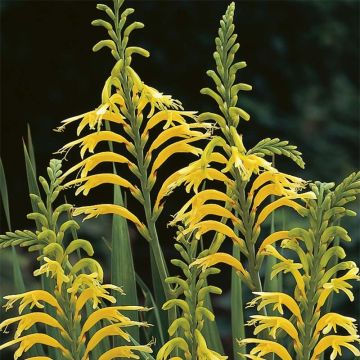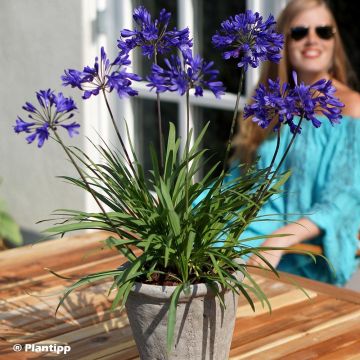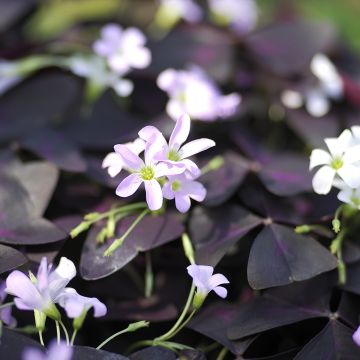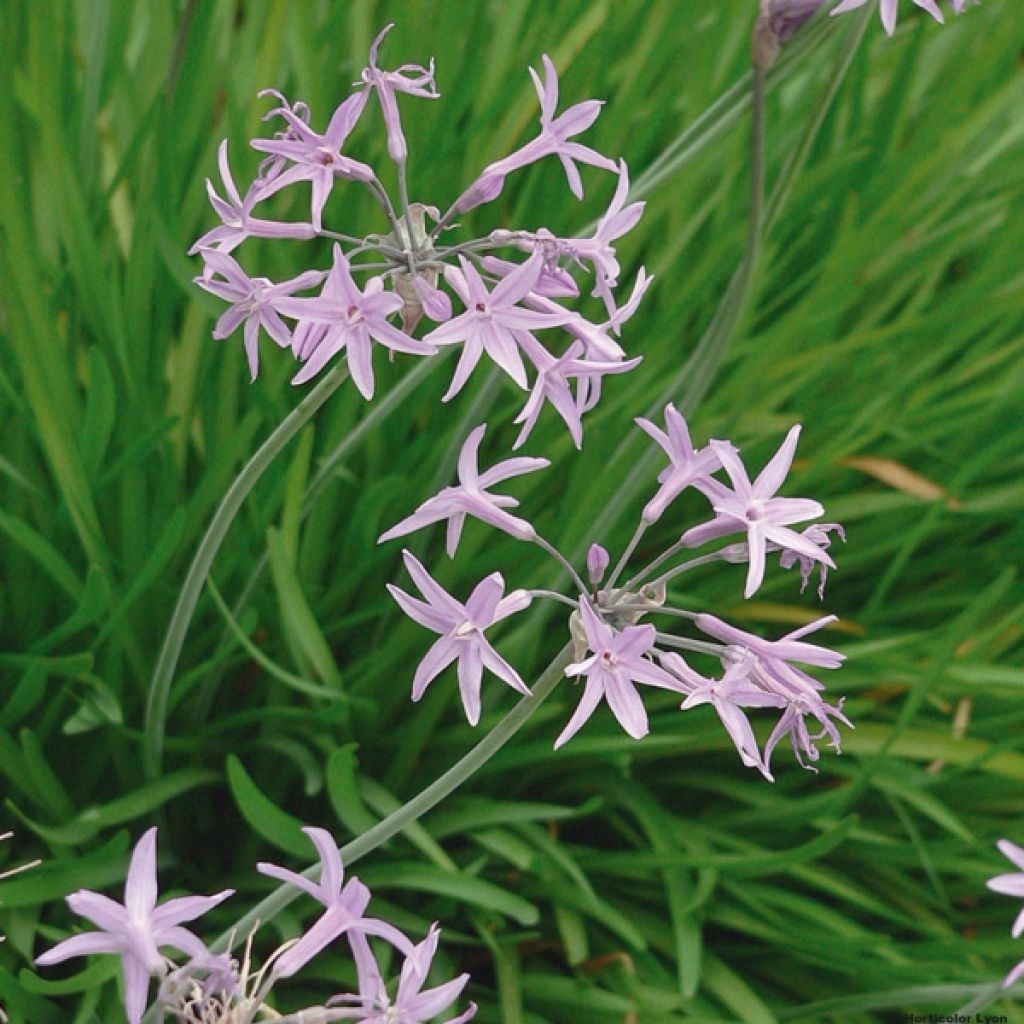

Tulbaghia cominsii Violacea - Society Garlic
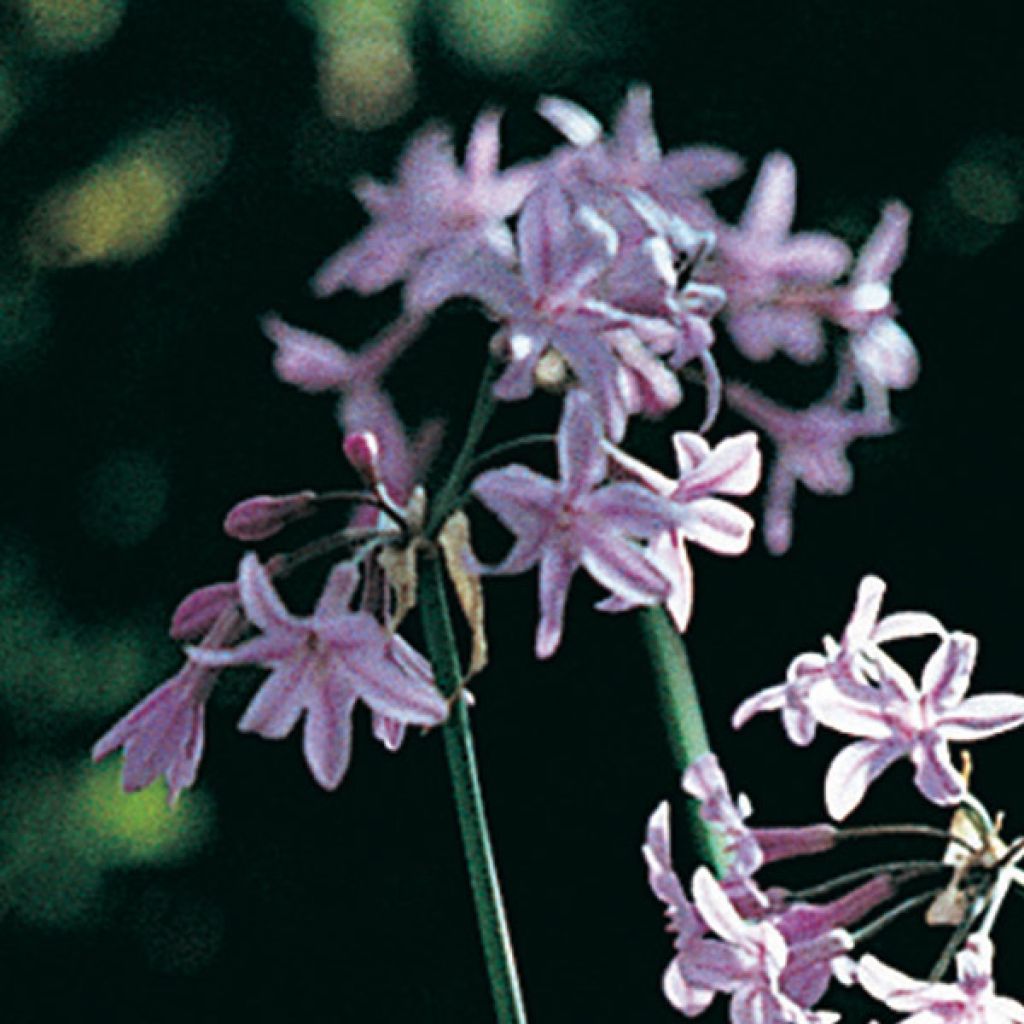

Tulbaghia cominsii Violacea - Society Garlic
Tulbaghia cominsii Violacea - Society Garlic
Tulbaghia cominsii Violacea
Society Garlic
Why not try an alternative variety in stock?
View all →This plant carries a 6 months recovery warranty
More information
We guarantee the quality of our plants for a full growing cycle, and will replace at our expense any plant that fails to recover under normal climatic and planting conditions.
From €7.90 for pickup delivery and €6.90 for home delivery
Express home delivery from €8.90.
From €7.90 for pickup delivery and €6.90 for home delivery
Express home delivery from €8.90.


Does this plant fit my garden?
Set up your Plantfit profile →
Description
The Tulbaghia cominsii violacea or Violet Tulbaghia is sometimes called South African Violet Garlic because of the garlic aroma that permeates its entire vegetation, and its South African origins. From summer to autumn, this bulbous plant produces umbels of delicate star-shaped flowers in a lilac pink colour that sway at the end of long stems, and its edible leaves can be finely chopped to flavor salads. Not very hardy in wet and cold soil, it is best grown in a pot and stored dry, except in very mild climates. This lovely plant thrives outdoors in summer in light but without direct sunlight.
Tulbagia violacea is a plant from the lily or allium family, just like garlic, onion, and leek. It is native to the meadows of Lesotho and Swaziland in South Africa. There, this bulbous plant is also widely cultivated for culinary and phytotherapeutic purposes. Well adapted to difficult and dry soils, it is however not resistant to severe frost and is hardy up to zone 7 in dry soil.
The plant forms a clump of thick and narrow, ribbon-like foliage from spring onwards, reaching 30 cm (12in) in height, which quickly widens through tuberous rhizomes bearing thin and compact bulbs. Protected from frost, this foliage will persist in winter. The flowering, particularly long-lasting, takes place from June-July to October if the soil remains moist in summer. In dry and warm regions, the flowers will be produced in spring, and again from September to November, with the return of rain. From the clump of foliage emerge 50-60 cm (20-24in) floral stems bearing at their tip false umbels of small tubular star-shaped flowers with 6 lilac pink petals. The entire plant emits a garlic odor that may not appeal to everyone. The flowering, highly visited by pollinating insects, gives way to ovoid fruits measuring about 1 cm (1in) in length. At maturity, these fruits release seeds that can self-sow in light soils.
Tulbaghia cominsii violacea is an excellent plant for coastal gardens, as it appreciates the mild climate and tolerates sea spray very well. It is particularly suitable for dry gardens in our Mediterranean or southern Atlantic regions. In mild climates, this small bulbous plant forms beautiful, highly flowered clumps in rockeries and sunny flowerbeds. It can be combined with silver-leaved ground cover plants (Stachys, Artemisia lanata, Cerastium), which enhance its elegant flowers. Elsewhere, it will make beautiful flowering pots, in the company of agapanthus, nerines, or belladonna lilies, for example. The flowers can decorate and flavor raw vegetable salads, and the finely chopped leaves can flavor sauces and dressings along with chives. Their flavor, similar to garlic, is slightly spicy and has notes of wild asparagus.
Tulbaghia cominsii Violacea - Society Garlic in pictures
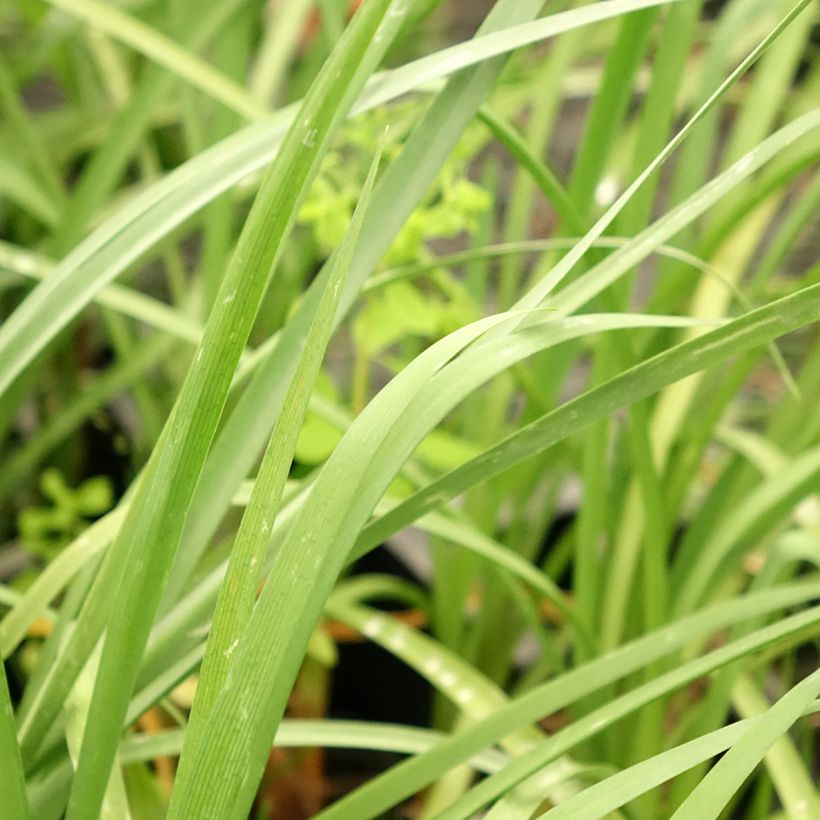

Plant habit
Flowering
Foliage
Botanical data
Tulbaghia
cominsii
Violacea
Alliaceae
Society Garlic
South Africa
Other Tulbaghia
View all →Planting and care
In open ground, in a mild climate, plant your bulbs in a well-drained and light soil, at a depth of 3 cm (1in). The Tulbaghia violacea is not very demanding when it comes to soil type, as long as it is properly drained. Resistant to summer drought, this bulb will adapt its flowering period to the climate: if the soil remains moist, it blooms from June to October. On the other hand, if the soil is dry in summer, it will flower in spring, go dormant in summer, and then bloom again from September to November. Transplant your three young plants into a pot of about twenty centimetres containing 1/3 potting soil, 1/3 compost, and 1/3 sand. Leave them in a warm and well-lit place (but without direct sunlight) until the last frost. You can then take your pot outside. Bring them indoors at the beginning of autumn when temperatures start to drop. In open ground, space the plants 20cm (8in) apart. In autumn, cut the clumps back to 3 or 4 cm (1 or 2in) from the ground and mulch heavily to protect from the cold. During the growth period, water two to three times a week and apply liquid fertilizer at least every 15 days to achieve good flowering. Reduce watering in winter. Repot every three years.
Planting period
Intended location
Care
Planting & care advice
-
, onOrder confirmed
Reply from on Promesse de fleurs
Bulbs to grow in pots
Haven't found what you were looking for?
Hardiness is the lowest winter temperature a plant can endure without suffering serious damage or even dying. However, hardiness is affected by location (a sheltered area, such as a patio), protection (winter cover) and soil type (hardiness is improved by well-drained soil).

Photo Sharing Terms & Conditions
In order to encourage gardeners to interact and share their experiences, Promesse de fleurs offers various media enabling content to be uploaded onto its Site - in particular via the ‘Photo sharing’ module.
The User agrees to refrain from:
- Posting any content that is illegal, prejudicial, insulting, racist, inciteful to hatred, revisionist, contrary to public decency, that infringes on privacy or on the privacy rights of third parties, in particular the publicity rights of persons and goods, intellectual property rights, or the right to privacy.
- Submitting content on behalf of a third party;
- Impersonate the identity of a third party and/or publish any personal information about a third party;
In general, the User undertakes to refrain from any unethical behaviour.
All Content (in particular text, comments, files, images, photos, videos, creative works, etc.), which may be subject to property or intellectual property rights, image or other private rights, shall remain the property of the User, subject to the limited rights granted by the terms of the licence granted by Promesse de fleurs as stated below. Users are at liberty to publish or not to publish such Content on the Site, notably via the ‘Photo Sharing’ facility, and accept that this Content shall be made public and freely accessible, notably on the Internet.
Users further acknowledge, undertake to have ,and guarantee that they hold all necessary rights and permissions to publish such material on the Site, in particular with regard to the legislation in force pertaining to any privacy, property, intellectual property, image, or contractual rights, or rights of any other nature. By publishing such Content on the Site, Users acknowledge accepting full liability as publishers of the Content within the meaning of the law, and grant Promesse de fleurs, free of charge, an inclusive, worldwide licence for the said Content for the entire duration of its publication, including all reproduction, representation, up/downloading, displaying, performing, transmission, and storage rights.
Users also grant permission for their name to be linked to the Content and accept that this link may not always be made available.
By engaging in posting material, Users consent to their Content becoming automatically accessible on the Internet, in particular on other sites and/or blogs and/or web pages of the Promesse de fleurs site, including in particular social pages and the Promesse de fleurs catalogue.
Users may secure the removal of entrusted content free of charge by issuing a simple request via our contact form.

































